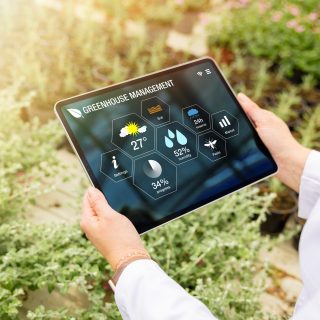
Back in the days of the Agricultural Revolution, the shift from hunting and gathering to farming changed humanity forever. In the search of ways to improve the cultivation of land, humans invented tools to help them; this started with the invention of the wooden plow, and has evolved to what we know today as tractors.
The first mechanized tractors appeared at the turn of the 20th century, and they have continually evolved, incorporating cutting-edge technology to improve efficiency and productivity since then.
In 1812, Richard Trevithick created the first steam powered engine, which was used for plowing and tilling the soil. This kind of early machines, were expensive and difficult to maintain but the advantages of using them were still significant, as they removed the need for manual labor or the use of horse-drawn equipment.
The first two-cylinder gasoline tractors appeared in the beginning of the 20th century, with the Hart & Parr Company producing the first commercially successful model in 1903. These models were more powerful and reliable, and farms across the globe started adopting them.
In the second half of the 20th century, the developments in the tractor industry were rapid; diesel engines started replacing gasoline ones, increasing power and efficiency while lowering operational costs. Model B John Deere tractors were the first to have electric starts, lighting , rubber tires and increased horsepower. A year later, Frank W. Andrew, looped a cable from the tractor’s front steering arm around a barrel, leading to the creation of the first driverless tractor.
During the 60s and 70s, issues such as weather conditions and operator’s safety were addressed, with the incorporation of more comfortable operator’s seating and sound shielding on the tractor.
In 1994, engineers from the Silsoe Research Institute developed a picture analysis system for managing a mini driverless tractor, which paved the way for modern technological advancements.
In the 21st century, tractors continue to evolve with the help of various technologies and the integration of data, making it possible to automate things such as spraying. In 2008, Deere and Company automated vehicle functions such as end turns, based on GPS. Today we may find tractors equipped with sensors that collect and transmit data about soil conditions, crop health and many more. With all these new advancements, farmers have the power to play a substantial role in the sustainability of farming and the reduction of their environmental footprint. Now it’s easier than ever to address challenges such as resource optimization and waste minimization, especially when it comes to spraying and combatting pests and diseases.
In this regard, Smart Droplets aims to deploy an autonomous retrofit tractor that will carry the spraying machine and sensors to execute necessary spraying tasks successfully. With functionalities such as the multi-sensor simultaneous localization and mapping system, the robot will be able to optimize the navigation procedure.
Combining data taken from the Digital Twin, along with the information from the localization module and status of the robot, e.g. tank capacity, the robot will be able to calculate the best route with aim to optimize the time and the spraying operation, and thus resources. The proposed autonomous navigation system will be conceived on top of the well-established, de-facto standard ROS19 middleware with growing presence in the robotics industry for its modularity, interoperability and efficiency.
This real-time multi-objective motion planning integration will minimize even further the spraying and operational requirement, serving the basic pillars of the EU’s Green Deal.

This project has received funding from the European Union’s Horizon Europe research and innovation programme under grant agreement No. 101070496.